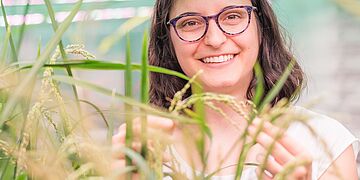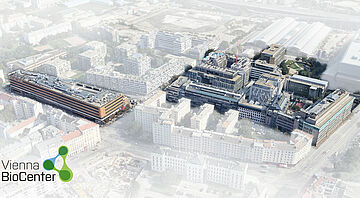The European Research Council (ERC) awarded Advanced Grants to five Vienna BioCenter group leaders, representing University of Vienna Faculty of Life Sciences, IMBA and the IMP.
Securing an ERC Advanced Grant is a remarkable achievement, and the Vienna BioCenter's distinction is further underscored by the presence of five such grants across more the 130+ groups on our campus. This level of competitiveness is truly exceptional, highlighting the outstanding caliber of our campus.
The European Research Council (ERC), set up by the European Union in 2007, is the premier European funding organisation for excellent frontier research. Every year, it selects and funds the very best, creative researchers of any nationality and age, to run projects based in Europe. The ERC offers four core grant schemes: Starting, Consolidator, Advanced and Synergy Grants. With its additional Proof of Concept grant scheme, the ERC helps grantees to bridge the gap between their pioneering research and early phases of its commercialisation. The overall ERC budget from 2021 to 2027 is more than 16 billion Euro.
IMP: ERC Advanced Grant to study how protein misfolding leads to disease
The European Research Council (ERC) awarded an Advanced Grant to senior group leader Tim Clausen to study protein misfolding in muscle with the goal to develop new tools against age-related muscle protein disorders. By using C. elegans as the primary model organism, researchers aim to uncover the key factors underlying muscle diseases associated with myosin misfolding, the molecular motor that drives muscle contraction.
Read the full story here
IMBA: ERC Advanced Grant to investigate arms race between transposons and genome defense
Julius Brennecke, Senior Scientist at IMBA, was awarded an Advanced Grant for his project on transposon-host coevolution. The funded project is the next step in the Brennecke Lab’s pursuit to unravel the continuously evolving cellular mechanisms that protect the genome from selfish genetic elements. The newly awarded ERC Advanced Grant is already the third ERC Grant for Brennecke, following his ERC Starting Grant and Consolidator Grant.
Read the full story here
Faculty of Life Sciences: Three Advanced Grants to study Marine snow in the deep sea, the path of Homo sapiens through the Levant and the evolutionary origin of neuro-muscular systems
Gerhard J. Herndl (Dep. of Functional and Evolutionary Ecology) has been awarded an ERC Advanced Grant for his project "NEREIDES", where he and his team will investigate unknown aspects of the marine carbon cycle on two research cruises with the Dutch research vessel Pelagia. Through sampling and analysis, they will study the organic material known as 'marine snow', looking at its chemical and biological composition, its origin, source, turnover and ecological impact on the (micro)organisms of the Atlantic. Their research also investigates its role as a carbon sink under changing climate conditions.
Thomas Higham's (Dep. of Evolutionary Anthopology) forthcoming ERC Advanced Grant project "Disperse" will focus on the migration of Homo sapiens into Eurasia across the Levant. He and his team are investigating the timing and frequency of human migration from Africa to Eurasia, looking in particular at encounters between Homo sapiens and other human species such as Neanderthals and Denisovans. They'll focus on Ksar 'Akil, an important archaeological site in Lebanon, which they will reopen and analyse using advanced sediment DNA techniques to study its artefacts, paleoenvironmental and climatic history. This comprehensive approach promises to provide valuable insights into cultural evolution during this crucial period of human history.
Ulrich Technau's (Dep. Neurosciences and Developmental Biology) ERC Advanced Grant supports his "EVONeuroMuscle" project, in which he and his team will trace the origins of neuromuscular systems in early animal evolution by deciphering and comparing the molecular profiles of muscle and nerve cells in cnidarians, sponges and comb jellies. Using transgenesis and CRISPR/Cas9 mutagenesis, the researchers want to elucidate the function of the individual neuromuscular modules in the organism as a whole. In addition, they are developing mathematical and biophysical models to simulate the complexity of modular systems.
Read the full story here



